Königsberg Bunker
In 1255, the Teutonic knights founded the town of Königsberg on the Baltic coast and the castle around which the city was built became a central place for the German order. In 1701, the kingdom of Prussia and Frederick I was crowned king and the city became the county seat of Prussian rulers. The city’s most famous son is otherwise the philosopher Immanuel Kant (1724 – 1804) who was born, worked and died in the city (he is buried at the cathedral on Kant island). In 1871, when Otto von Bismarck united the duchies and the kingdoms under the German flag, Prussia became the largest state. After the war East Prussia was separated from the rest of Germany by the Polish corridor but remained a German state. Despite the depopulation of Königsberg (and East Prussia) as a result of unemployment, the city retained its position as a cultural and historical city that the Germans cherished.
When the Second World War broke out, about two million Germans lived in East Prussia (just over 300,000 in Königsberg) and Königsberg had not yet been affected by the ravages of the war until August 1944. But the night between August 29 and 30, British and american bombers carried out a devastating raid that mostly destroyed the city. In the autumn of 1944, when the Soviet Red Army entered East Prussia and approached Königsberg, thousands of civilians fled westward. But the most senior political leader in East Prussia (Gauleiter) was the hard-line Nazi, Erich Koch, who waited til the last minute to allow the civilian population to be evacuated from Königsberg. This had the consequence that thousands could not escape the Red Army. The only evacuation route was by sea via the coastal town of Pillau (now Baltiysk), but the evacuation ships were under constant Soviet shelling.
By January 1945, the Red army had surrounded the city and a siege began. Hitler issued an order for the city to be turned into a fortress and defended to the last man. The final attack on the festung Königsberg began on April 6, 1945. The German defense was led by General Otto Lasch who had placed his command center in a bunker with 21 small rooms in central Königsberg. The defense itself had been placed in the twelve fortifications surrounding the city. The correlation of forces was 1 to 3 in Soviet favor and also a materially powerful advantage. The Germans offered strong resistance, but the soviet number meant that the German defense slowly broke down. The Germans suffered from a lack of both ammunition and supplies, which led Otto Lasch to realize that any further resistance was no longer possible. He surrendered on his own initiative on the evening of April 9.
Current status: Preserved with museum (2013).
Location: 54°42'48.65" N 20°30'36.07" E
Get there: Bus.
Follow up in books: Kershaw, Ian: The End: The Defiance and Destruction of Hitler’s Germany, 1944-1945 (2011).
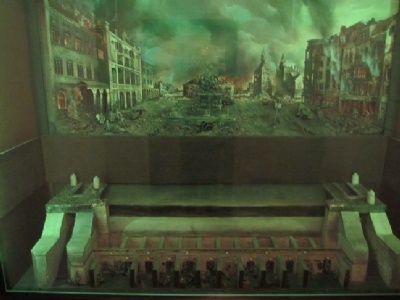
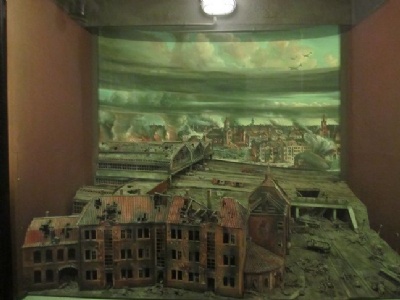
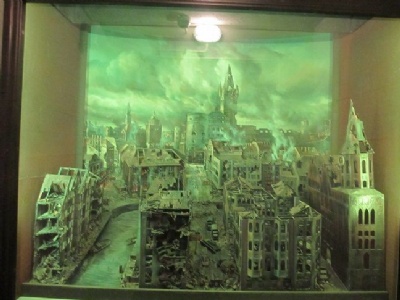
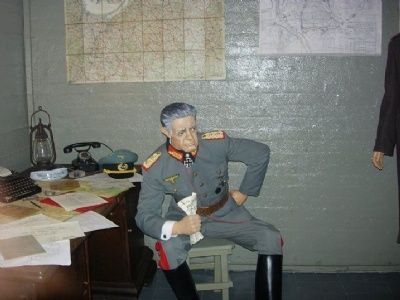
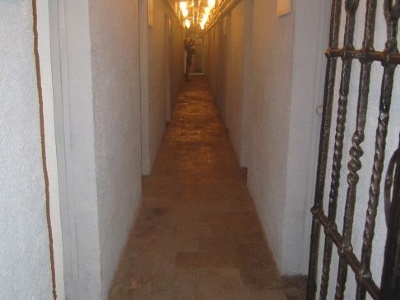
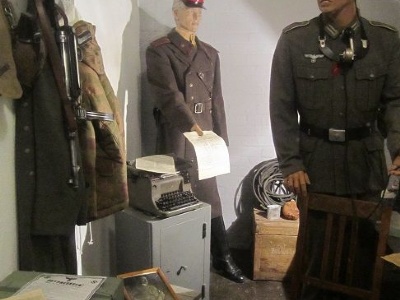
The Bunker is completely preserved and there are some interesting dioramas of the battle in several of the small rooms. The museum is very small and unfortunately everything is in Russian. Another interesting museum and a complement to the bunker is the nearby Kaliningrad Regional Museum of History and Art at ulitsa Klinicheskaya 21. An entire floor is dedicated to the war and in particular the battle of Königsberg. Unfortunately, this museum, like the bunker, is also in Russian.
At the victors’ (US, Soviet Union and Britain) conference in Potsdam in july/august 1945 it was decided that East Prussia would be divided between Poland and the Soviet Union where Königsberg ended up in the soviet part as part of the administration area Kaliningrad oblast, a Soviet exclave (now Russian) of about 15,000 square kilometers, bordering Poland and Lithuania. From a Soviet perspective, Königsberg was associated with both Prussian and German militarism which under no circumstances could be allowed to rise again. One measure was to evacuate about 200,000 Germans who were still in Königsberg to Germany and replace them with Russians. In 1946, the city was renamed Kaliningrad in memory of the Soviet Politburo member and Stalin’s close friend Mikhail Kalinin, who died the same year. The city was not rebuilt according to old drawings, but rebuilt in Soviet style Architecture.
By far the ugliest and largest example of this is the approximately fifteen-storey House of Soviets. This colossal construction began to be built in the early sixties on the site where Königsberg Castle had previously been located. The idea of the house was that it would house Kaliningrad’s political administration. But the construction was immediately characterized by problems and the project was closed in the mid-eighties without ever having been used for its purpose. Since then it has been abandoned, surrounded by fences and guarded by a security guard with vicious dogs.
Due to the central location of the house, it has become a symbol of Kaliningrad that the locals are not proud of. This is easy to understand and therefore the house is called the Monster by locals. But at the same time there is something fascinating about the "monster". The monster is also a symbol of a regime which, like other dictatorships, tried to accentuate its own greatness and perfection by expressing itself in grand buildings. But which after the fall of communism has rather become a symbol of the failure of a regime. For those who are interested in how it looks indoors, there are opportunities to bribe the guard and I can promise that it is interesting to take the stairs up to the top. From there, a magnificent view of the city is offered.